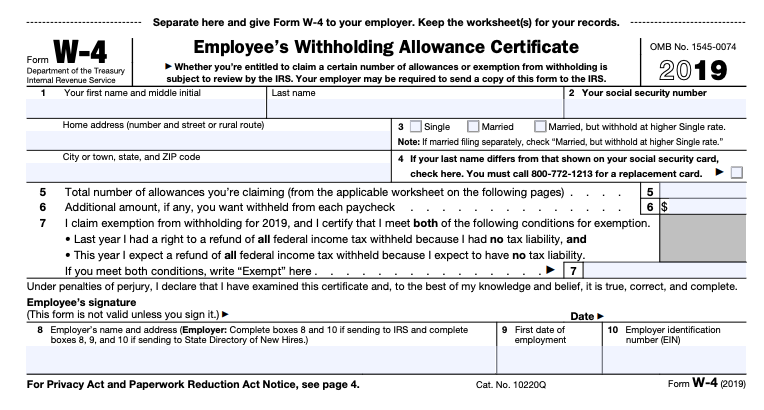How The W-4 Withholding (IRS Withholding) Could Affect Finances In The Coming Year

With 2020 in view, a new
set of rules and regulations have been put in place; some of which could affect
our finances in the coming by either building them up or slowing them down. We
have the adjusted IRS withholding tables that may influence take-home pay and
help taxpayers avoid costly penalties, the minimum wage increases in 25 states
and the amended overtime pay requirements.
Investing Port has
researched to see how each of these new rules could affect our finances and
would be focusing on the W-4 Withholding in this article.
W-4 Withholding
Recently,
the federal government issued a new, more detailed, version of Form W-4, also known
as the Employee’s Withholding Allowance Certificate. The changes range from the
2017 Tax Cuts and Job Act (TCJA), which altered federal income tax rates and
brackets starting in 2018, and in turn, shifted IRS withholding tables.
Pete Isberg, vice
president of government relations for ADP, spoke to Yahoo Finance saying, “This
is essentially a delayed reaction to the TCJA that took effect in 2018. Income
tax withholding essentially has undergone a very major overhaul for 2020 that
could be a source of confusion.”
Changes made to the current W-4 Withholding form
· The most important change to the W-4 Withholding is
that the IRS has done away with the “allowances” method to estimate
withholding.
Isberg further said,
“Withholding allowances have been the basis for payroll withholding forever. So
that's going to cause a little confusion.”
· Another change is that which will impact taxpayers
with multiple jobs and married filers filing jointly.
Isberg commented saying,
“The tax tables just assume that spouses earn about the same amount, and it
divides the standard deduction and the tax brackets kind of equally between two
jobs." The new section replaces a 9-step process that was previously used
to estimate withholding for multiple income households.
· An elective section allowing taxpayers to withhold
for separate sources of income, such as interest, dividends, and retirement
income was also changed.
Taxpayers who have
previously submitted a Form W-4 and have not sent in the new version are not
required to update or replace their submission. However, penalties for
underpayments resulting from outdated form calculations will be assessed for
the first time beginning with filings for the 2019 tax year. Those who begin
new employment after 2019, or wish to adjust their withholding, must complete
the new form.
The IRS reminds taxpayers
to recheck withholding again at the start of 2020 on its website. The agency
says a reassessment is important, for
those taxpayers who reduced withholding in 2019, or did not file a new Form W-4
for 2020. The agency provided a calculator to
estimate withholding is also provided on its website.
Ultimate
Credit:
Yahoo
Finance


Be the first to comment!
You must login to comment